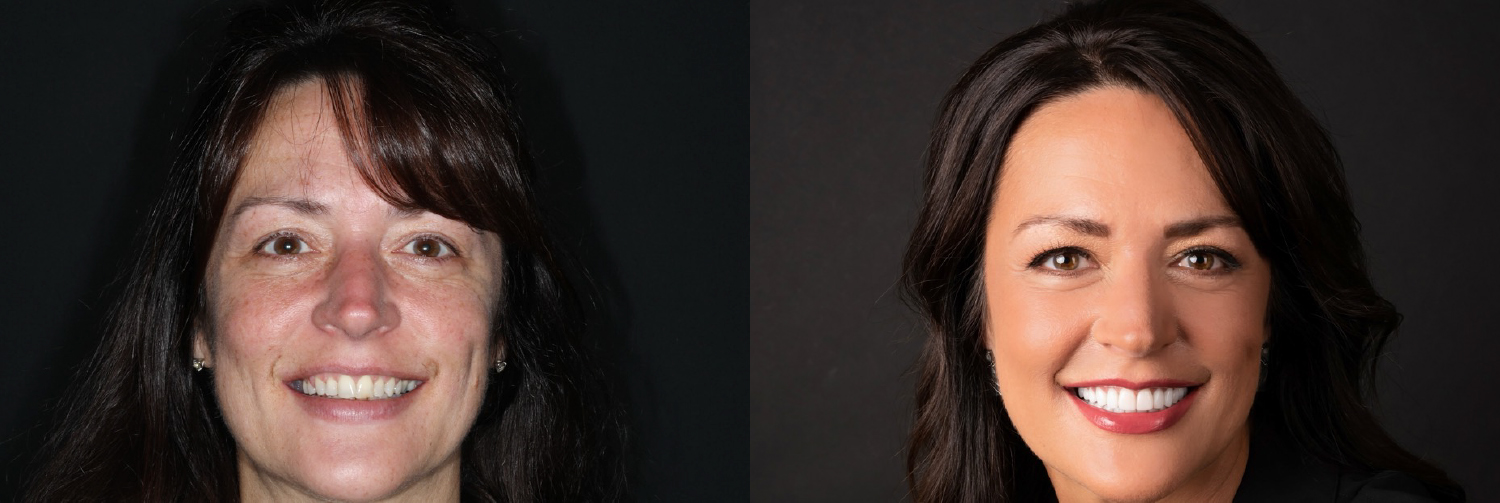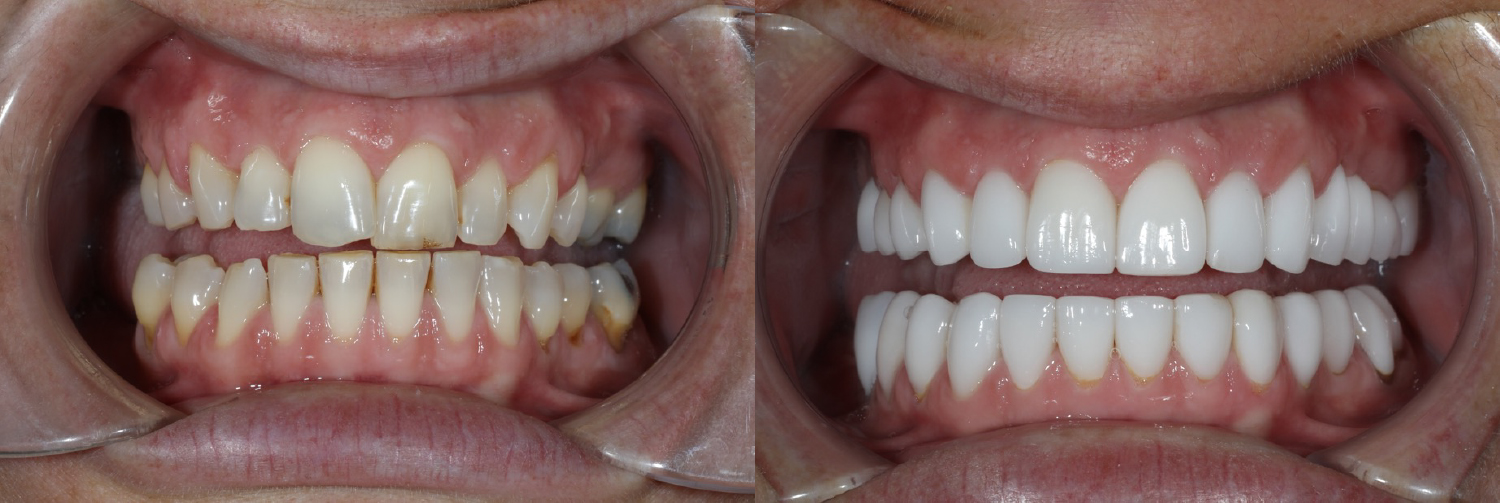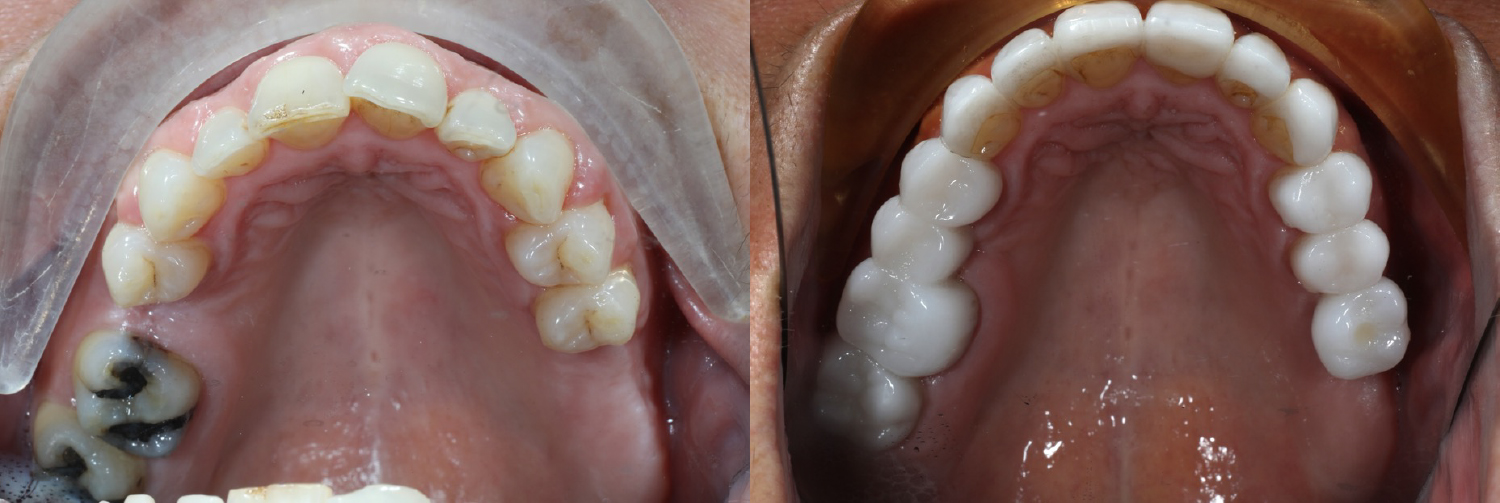This website uses cookies so that we can provide you with the best user experience possible. Cookie information is stored in your browser and performs functions such as recognising you when you return to our website and helping our team to understand which sections of the website you find most interesting and useful.
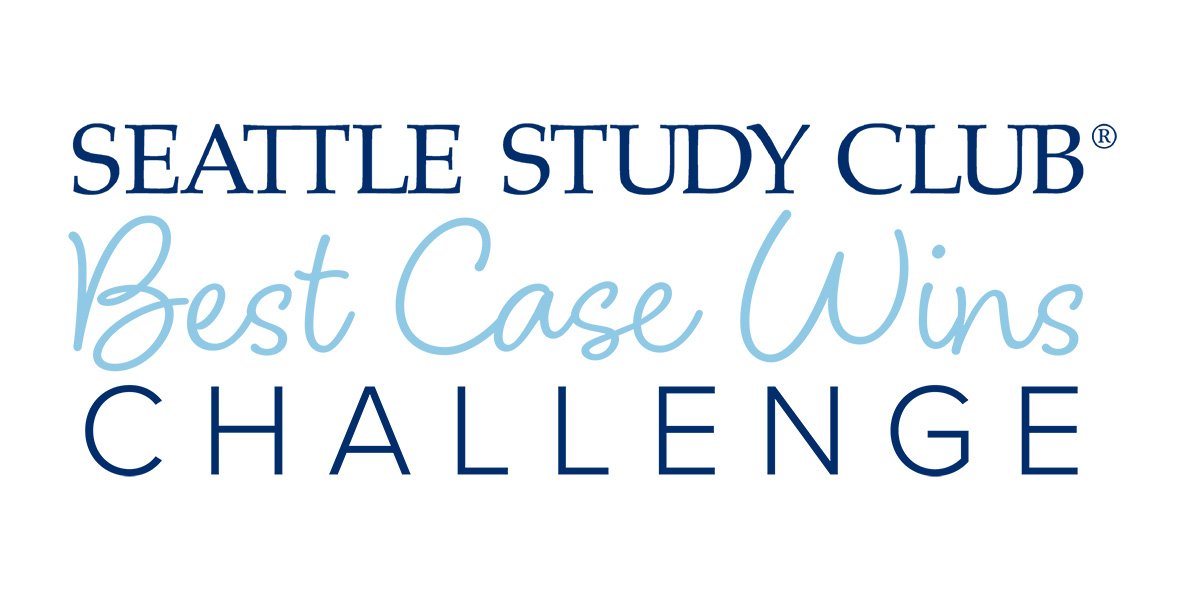
FULL MOUTH RESTORATIVE
Case 1
Patient presented with pain on lower left #20, #30 and had infections on #14, 29, 30 and severe dental anxiety. Treatment plan included root canal treatment on #14, #29, soft tissue grafting, crown lengthening on #2-5, #12-15, #19-20, #29, #31.


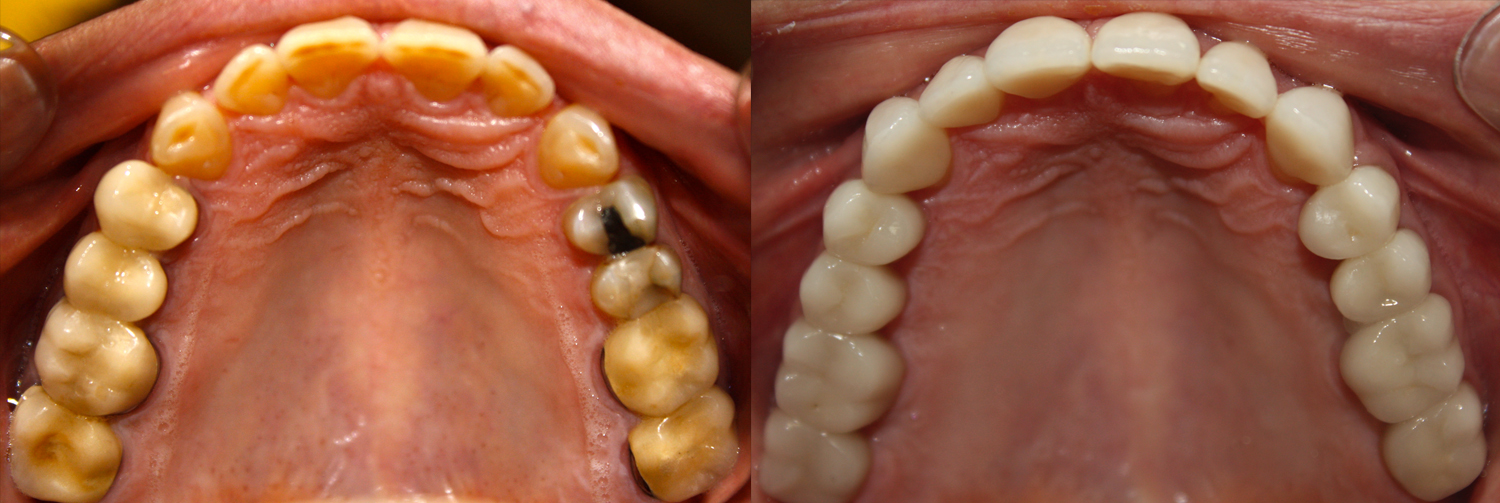
Case 2
Patient presented with mobile teeth, severely swollen gums, protruded jaws and dark teeth and was looking for a better and healthier appearance. Full mouth treatment plan was accomplished with the use of implants.


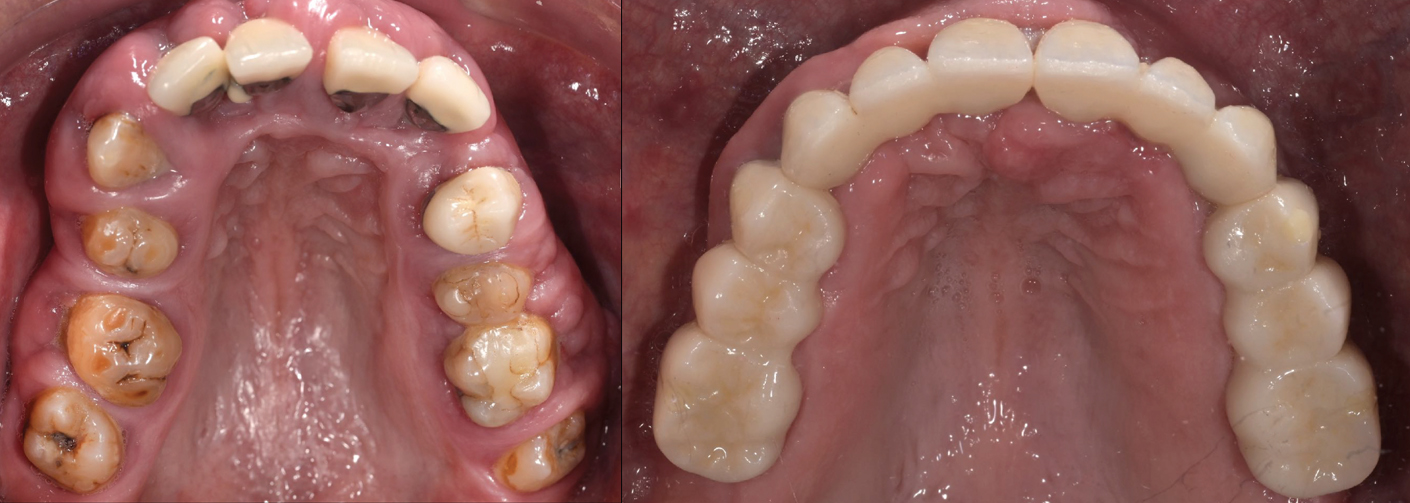
Case 3
Patient presented with severe worn dentition. Treatment plan agreed to is an adhesive hybrid (direct and indirect) full rehabilitation opening the VDO. On the first upper and lower molars plus the four canines, after a very conservative prep, were delivered lithium disilicate onlays, while on all the other 20 teeth a no prep direct molding approach through the "Index Technique".



Case 4
Patients chief concern was misaligned teeth, dark filling, un-even gum-line and evident tooth wear. Treatment plan included orthodontics, functional bite balancing, limited crown lengthening, removal and replacement of dark fillings and non-invasive full mouth rehabilitation.
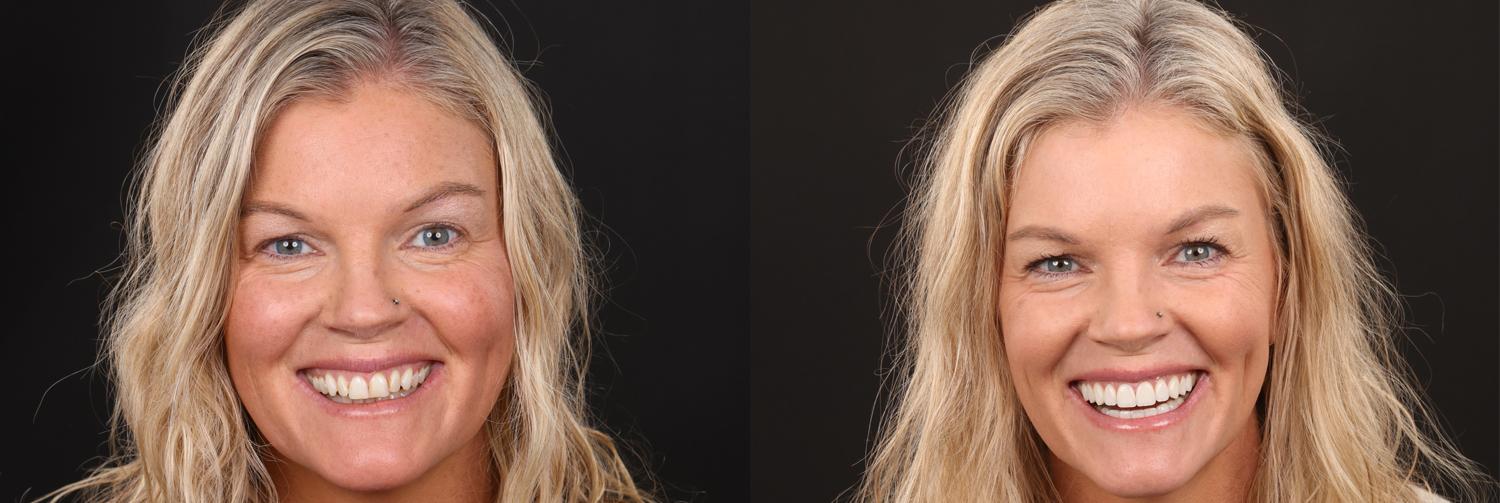
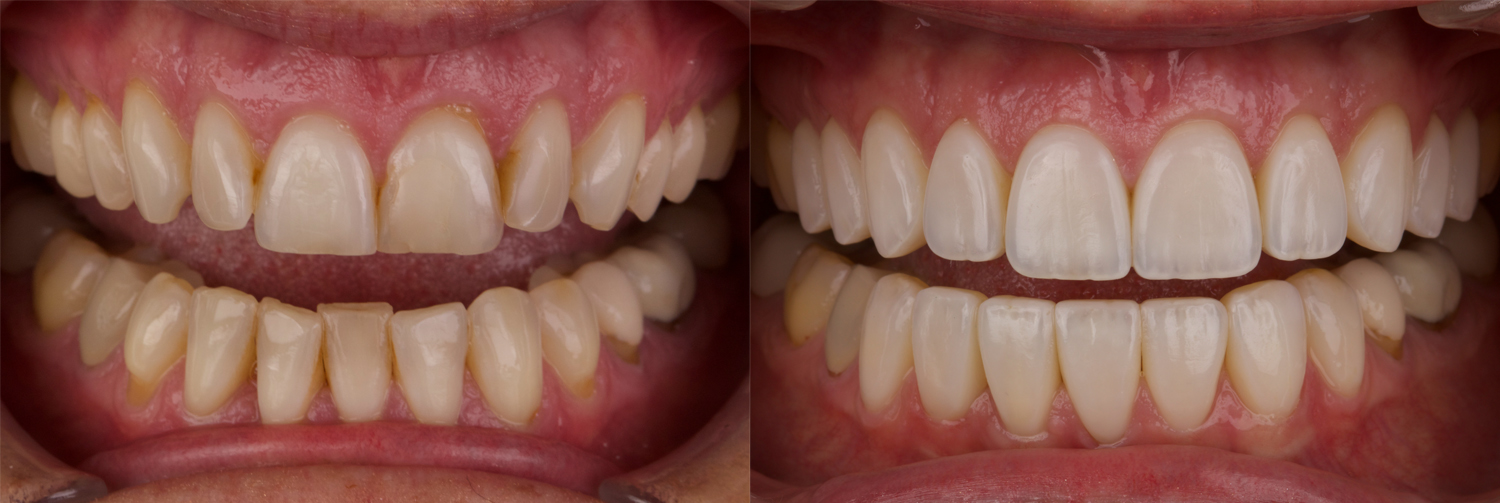

Case 5
Patient had lived with an anterior cross-bite her whole life which had caused significant damage to upper teeth. Her existing restorations were of poor aesthetic quality suffering from marginal show, recurrent caries and tooth loss. Treatment of upper teeth included #3 e-Max veneer, #4, 6 zirconia crowns, #7-11, zirconia bridge, #8, 10 extraction and #12-14 zirconia fixed bridge. Treatment of lower teeth included #18-21 metal-ceramic fixed-movable bridge, #22-26 e-Max veneers and #27-31, zirconia fixed-movable bridge.
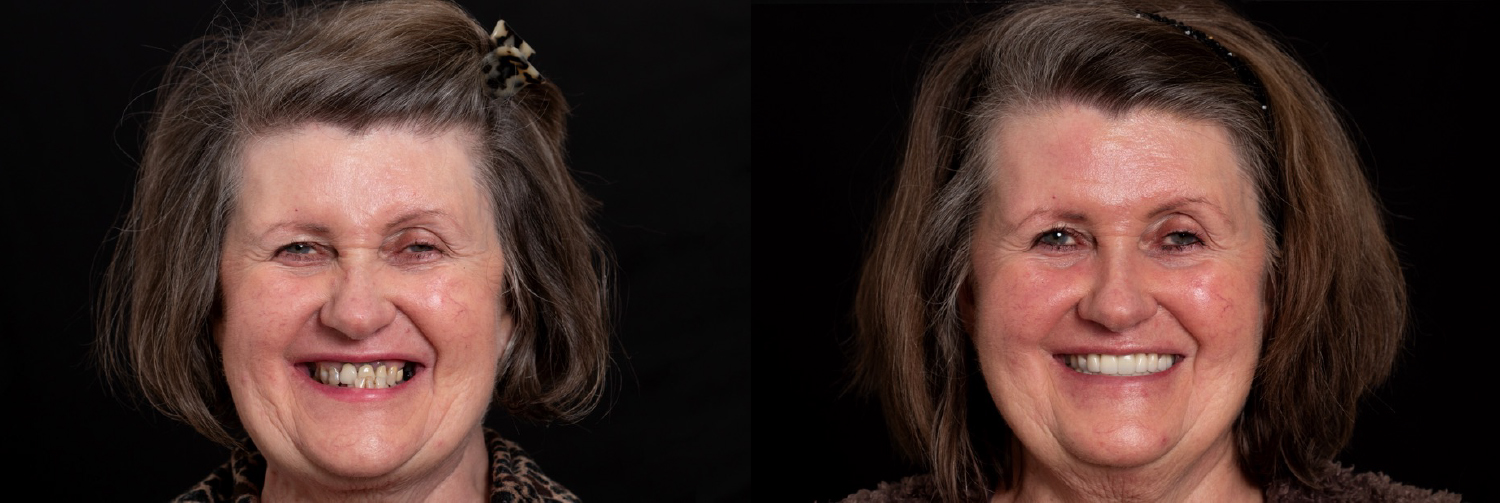

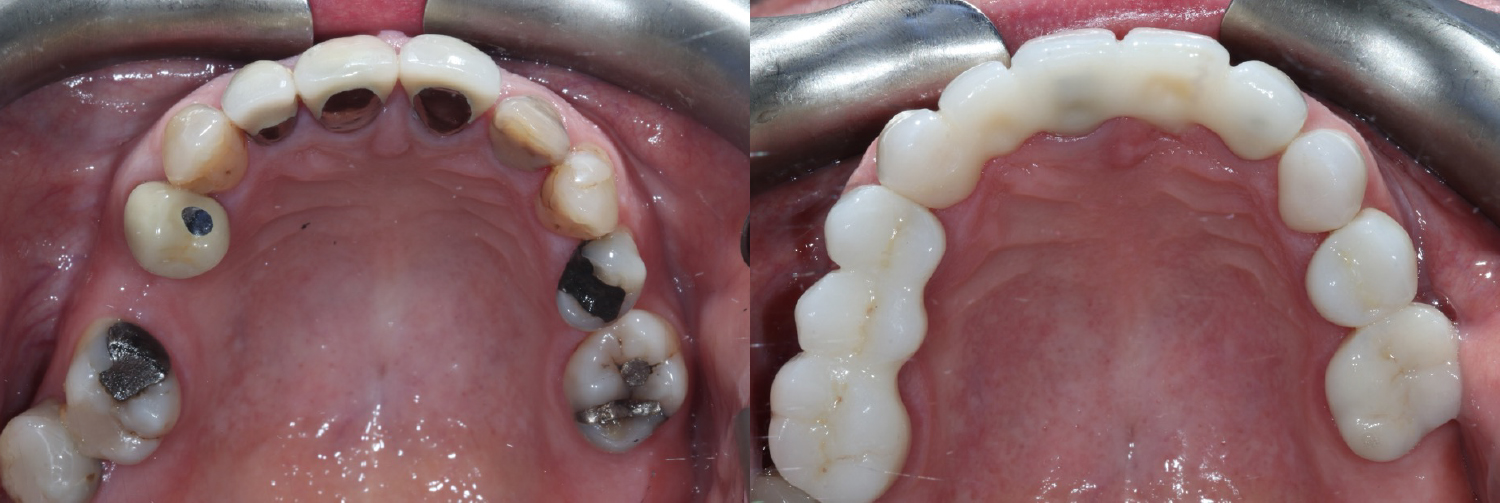
Case 6
Patient did not like smile and teeth were wearing down, crown lengthening was performed on #4-13. Decay was excavated and I used DenMat core build-up material to create idealized preps. Once the preps were finished, I made a PVS impression. Temps were splinted polymethyl methacrylate (PMMA). I restored the maxillary arch with Ivoclar Zir-CAD and luted them in place with GC resin modified glass ionomer (RMGI) cement. Steps were then repeated to restore the mandibular arch. Occlusion was set in canine guidance and posterior cusps were clear in excursive movements.



Case 7
Patient presented looking for treatment on "disappearing teeth". Treatment plan included a full mouth rehabilitation via monolithic lithium disilicate crowns on #2, 3, 14, 15, 18, 19, 30, 31 and layered lithium disilicate crowns on #4-12, #20-29.
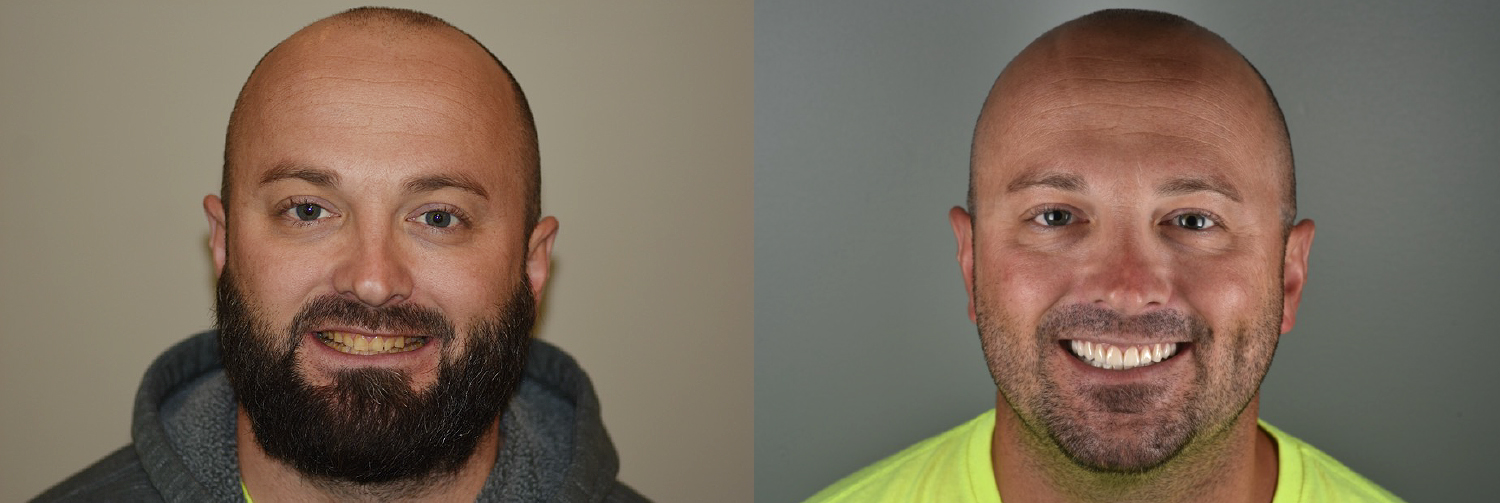
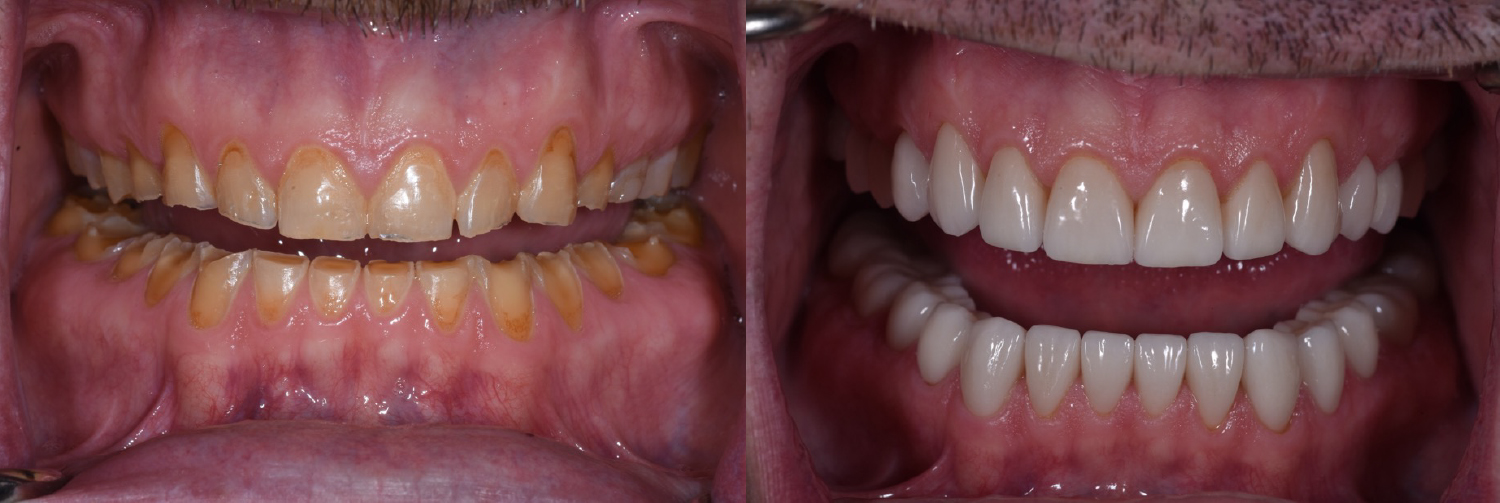
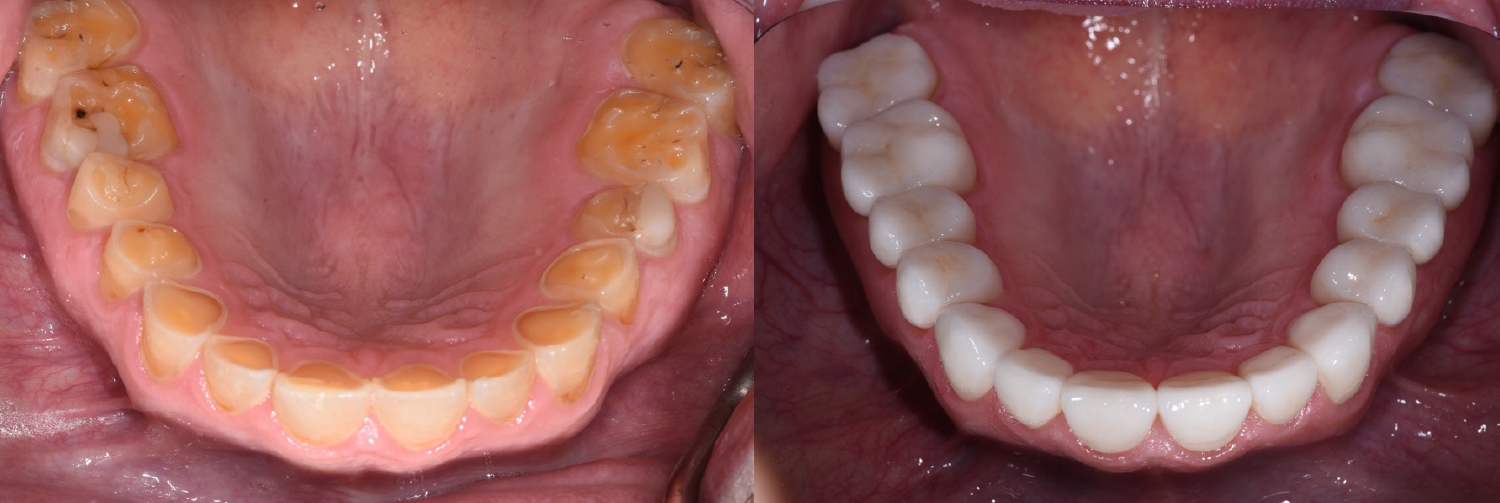
Case 8
Patient presented with chief concern to improve her smile. Following periodontal therapy, she underwent comprehensive orthodontics to prepare occlusion for optimal restoration. Restorative treatment included eMax crowns #22-27, implants and custom abutments #12, 14, 20, 28, 30; zirconia fixed prostheses: #3-#5, #12-#14, #28-#30, abutment-supported zirconia crown: #20, tooth-supported layered zirconia crowns: #6-11, #21.

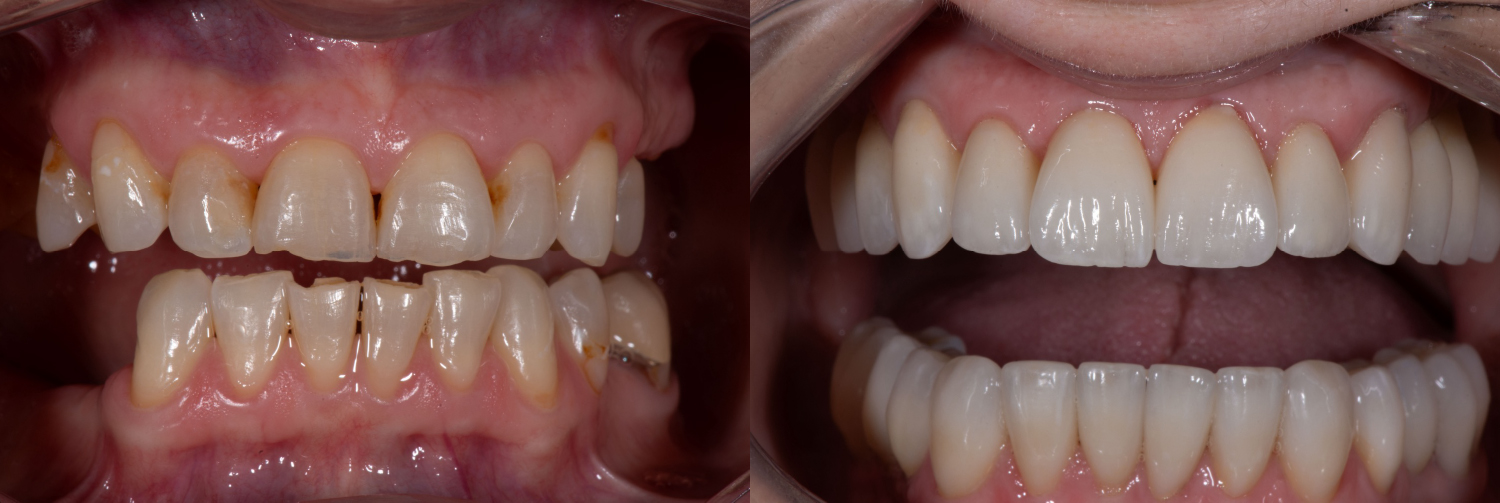

Case 9
Patient wanted to improve smile and had concerns about the declining stability of her bite. Treatment plan included implant placement on #3 #30, root canal therapy on #19, crown lengthening #19, three unit bridge #12-14, eMax crowns on #15, 19-21, 28-29 and eMax veneers #4-11, 22-27.
